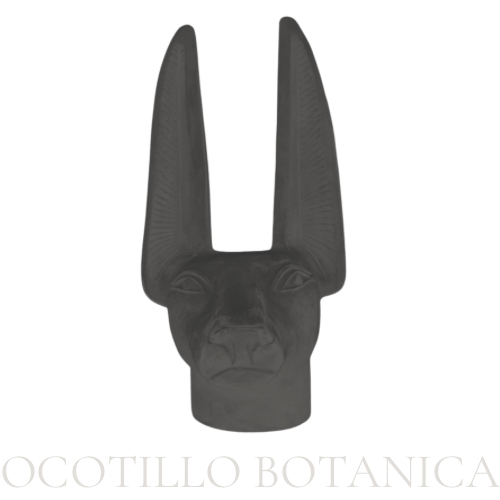Ocotillo Botánica
Bust of Tutankhamun
Bust of Tutankhamun
Historical Reproduction - Vintage - 2001
DeAgostini, The Glory of Ancient Egypt, Collectors Figurine
Issue Unknown - Statue Only
Approximately 2.5” tall
TUTANKHAMUN
Tutankhamun, also known as King Tut, was an ancient Egyptian pharaoh who ruled during the 18th dynasty of the New Kingdom period, from approximately 1332 to 1323 BCE. Despite his relatively short reign, Tutankhamun is one of the most famous and enigmatic figures in ancient Egyptian history, largely due to the discovery of his nearly intact tomb in the Valley of the Kings in 1922.
Tutankhamun ascended to the throne at a young age, possibly around the age of nine, following the death of his father, Akhenaten. He is believed to have been the son of Akhenaten and one of his sisters, although the identity of his mother remains uncertain. Tutankhamun's reign was marked by a restoration of traditional religious practices and a return to the worship of the god Amun, after the tumultuous religious reforms of his predecessor.
The discovery of Tutankhamun's tomb by archaeologist Howard Carter in 1922 was a monumental event that captured the world's imagination. The tomb, designated KV62, contained a vast treasure trove of artifacts, including elaborate funerary masks, golden coffins, chariots, furniture, and other items intended to accompany the pharaoh in the afterlife. The exquisite craftsmanship and wealth of the tomb's contents provided valuable insights into ancient Egyptian burial practices and artistic techniques.
One of the most iconic artifacts found in Tutankhamun's tomb is the gold funerary mask, which depicts the young pharaoh's serene and youthful visage adorned with precious metals and gemstones. This mask has become an enduring symbol of ancient Egypt's opulence and mystery, synonymous with the glamour and allure of the pharaohs.
Despite the grandeur of his burial, Tutankhamun's reign was relatively unremarkable in terms of military conquests or political achievements. His early death, possibly around the age of eighteen or nineteen, left little time for significant accomplishments, and he was succeeded by his vizier and eventual successor, Ay.
The legacy of Tutankhamun is primarily tied to the discovery of his tomb and the subsequent fascination with ancient Egyptian history and culture. His reign serves as a window into a tumultuous period of Egyptian history, marked by religious upheaval, political intrigue, and artistic innovation. Tutankhamun's golden treasures continue to captivate the world, offering a glimpse into the splendor and mystique of ancient Egypt's royal past.
Couldn't load pickup availability
Share






